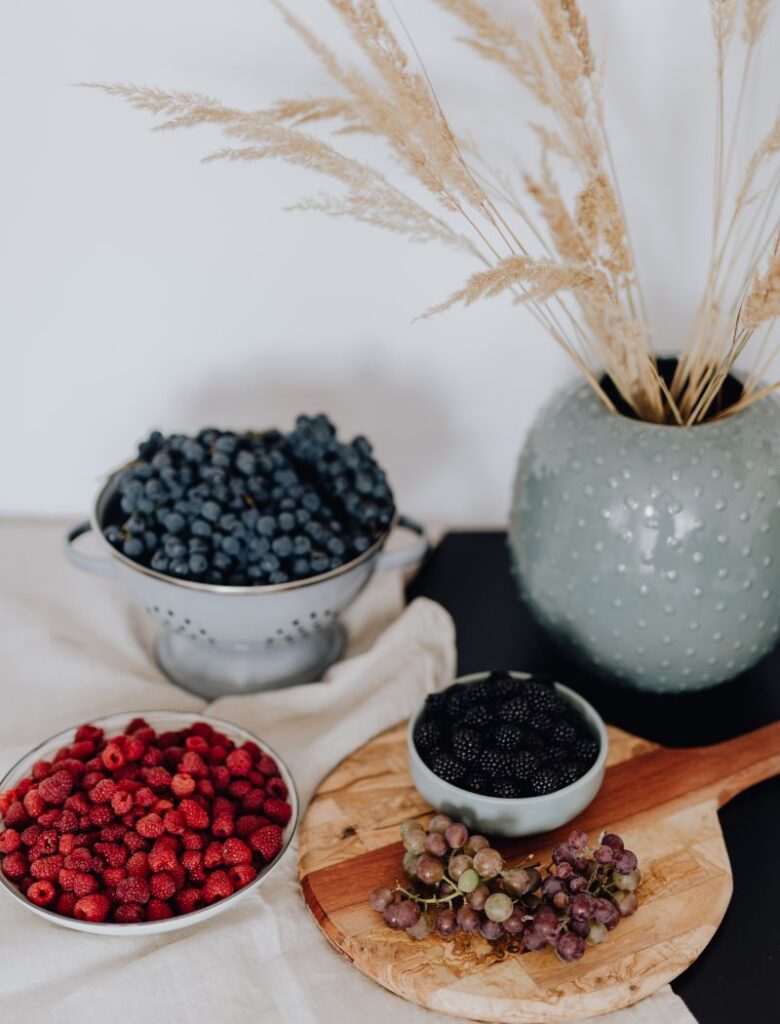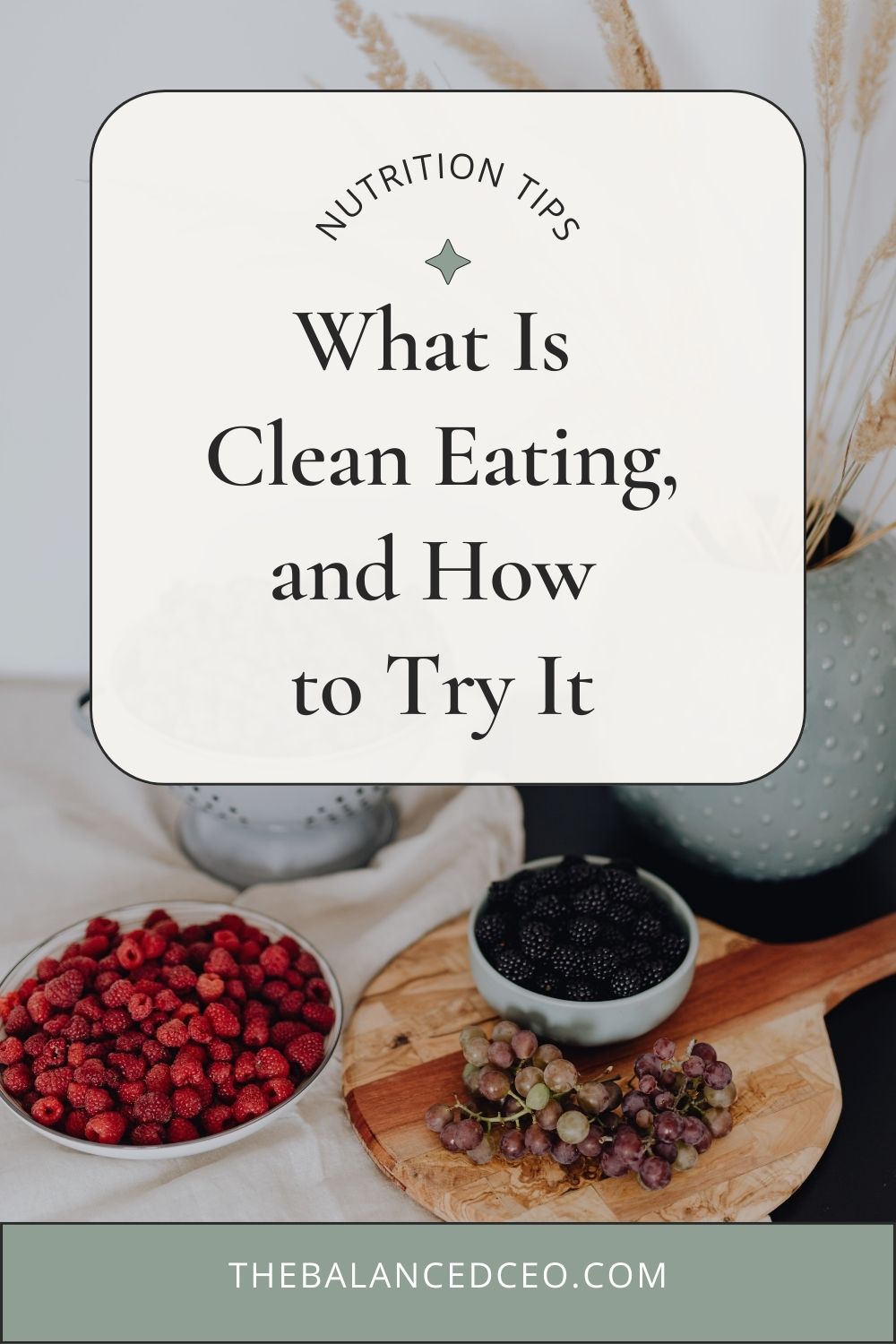This post may contain affiliate links, which means I’ll receive a commission if you purchase through my links, at no extra cost to you. Please read full disclosure for more information.

How’s your everyday diet? If that question makes you feel a bit uncomfortable — maybe even guilty — you have the power to change. It starts by discovering what clean eating is and incorporating small, manageable changes into your daily meals.
There’s no need for crash diets or recipes requiring indecipherable ingredients. Here’s an overview of clean eating and how to get started.
What Is Clean Eating?
The precise definition of clean eating varies from person to person. However, most people consider it a diet low in processed and artificial ingredients and rich in whole foods resembling their natural forms.
What Are the Health Benefits of Clean Eating?
You’re probably interested in clean eating for the health benefits. Such a diet may confer the following perks:
- Manage weight without dieting: Clean eating emphasizes real food, including plenty of fresh fruits, veggies and whole grains. These products are rich in fiber, which bulks up your gut and makes you feel fuller, helping you reduce your overall calorie intake without feeling deprived.
- Decrease disease risk: Many substances in processed foods — such as artificial sweeteners — increase the risk of conditions from heart disease to cancer in laboratory studies. Although the FDA considers many such ingredients safe in moderation, reducing your consumption may lower your risks.
- Improve your overall nutritional intake: Processing removes fiber and other valuable nutrients from food. Eating more whole foods as part of a clean eating lifestyle means getting more of what your body needs directly from the source.
Do You Have to Eat Clean All the Time?
Some folks take clean eating further, eliminating substances like meat or processed flour. However, there’s no need for unnecessary dietary restrictions. For example, you might reduce your intake of foods with added sugar but still allow yourself a slice of birthday cake now and then.
In general, it’s best to avoid all-or-nothing thinking, which can lead to poor decision-making. There’s a big difference between eating a single fast food burger and going on a 30-day Mickey D’s spree. If you eat something that doesn’t qualify as “clean” by your definition, acknowledge how you feel and resolve to make better choices at your next meal instead of throwing in the towel.
8 Clean Eating Principles to Try in Your Life
Clean eating isn’t a diet — it’s a pattern of decision-making that adds up to big results. As such, there’s no need for a radical pantry overhaul. Instead, incorporate the following eight principles into your daily food choices.
1. Seek Tiny Ingredient Lists
A good rule of thumb is a food is too processed if you can’t pronounce the ingredients on the label. Seek meals and snacks with the shortest ingredient list possible. It’s even better if you recognize each one without referring to Google.
For example, you might find a bag of popcorn in the snack food aisle containing only the popped kernels, olive oil and sea salt. Such a treat might be a better choice than a frozen chicken and vegetable meal with a laundry list of indecipherable ingredients you need a science textbook to interpret.
2. Make One Clean Swap Per Meal
Eating clean becomes tougher if you have a family full of picky kids. If your little one is in the midst of a chicken-nuggets-and-mac-and-cheese-only phase, try making one healthier swap per meal.
Sometimes, doing so may involve little more than adding a crisp salad or a side of veggies to the menu. However, you could also:
- Make homemade breaded nuggets instead of processed, frozen ones.
- Use real cheese in the macaroni instead of orange powder.
- Add a few cauliflower florets to the mac and cheese.
3. Choose Organic
Organic foods adhere to higher production standards that reduce the amount of harmful pesticides and growth hormones in your food. Although they cost a bit more, they benefit your health and the planet. Fewer chemicals mean a lower risk of various cancers and other diseases.
Furthermore, pesticide use damages colonies of beneficial organisms in the soil that enhance plant nutrition. Organic growing processes forbid the use of these harmful substances.
4. Patronize Your Farmer’s Market
If you want to find organic produce on the cheap, head to your local farmer’s market. A quick chat with the folks at the stand reveals their growing methods, ensuring your fruits and veggies remain free of harmful chemicals.
Small, local markets that meet only one or two days a week are your best bets for bargains. Go at the end of the day — many vendors would rather reduce their price for a quick sale than take their veggies home to rot before the next market day.
5. Practice Mindful Eating
Mindful eating deepens your appreciation of food by encouraging you to savor every bite. Additionally, it could help you drop weight without dieting, as it alerts you to the reasons why you eat — are you genuinely hungry or simply bored?
This also means being mindful of what’s on your plate for each meal. Ask yourself how you feel after you eat a meal. Do you still feel hungry? That may mean you need more protein, which helps you feel fuller longer. Listen to your body to find ways to make your diet more balanced.
6. Hit the Bulk Bins
The foods in bulk bins often consist of a single ingredient, such as oats, sunflower seeds or hazelnuts. Take your reusable containers and stock up.
Doing so may also benefit your pocketbook. Much of the price you pay at the grocery store is for packaging, not product — and some stores give an additional discount to those who bring their own bags.
7. Shop the Outside Aisles
While you can find ingredients in grocery store aisles, the best foods for clean eating lie around the perimeter. There, you’ll find produce, freshly baked whole-grain bread, meats, fish, and dairy.
8. Go Raw
Going raw doesn’t necessarily mean steak tartare, especially if your definition of clean eating entails reducing meat consumption. However, many vegetables contain more nutrients when consumed uncooked, especially those rich in water-soluble vitamins like B vitamins. Strive to include a variety of raw and cooked foods, giving preference to those that require little processing to taste delicious, like apples.
Getting Started With Clean Eating
If you feel vaguely guilty about your everyday diet, you have the power to change. There’s no need to take radical measures. Instead, incorporate clean eating principles into your daily meal planning. Using the tips above will improve your nutritional intake while reducing your disease risk deliciously.

Cora Gold
Contributor





Leave a Reply